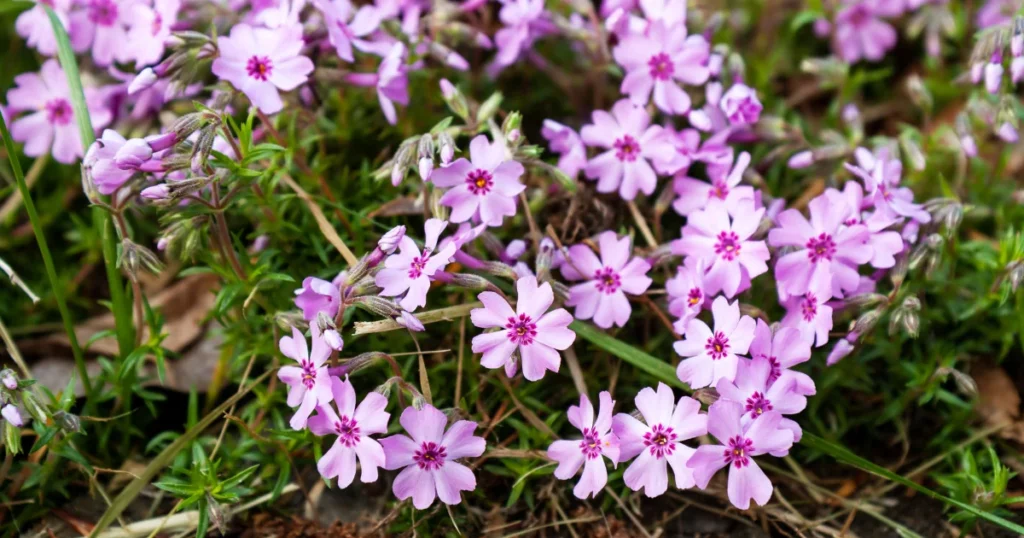How to Prune Creeping Phlox in Winter

As a seasoned gardener, the arrival of winter often speaks to me in a language of solitude and reflection. Among the myriad of plants that grace my garden, creeping phlox holds a special place, painting the earth with a palette of colors as it sprawls gracefully across the soil.
The process of pruning this hardy perennial is a ritual that I look forward to every year. It’s a way to bid farewell to the past blossoming season while preparing for the new buds that will emerge with spring’s first light.
This article will guide you through when and how to cut back phlox after flowering and provide detailed steps on pruning creeping phlox in winter. Also, I have shared care tips to help you safeguard your creeping phlox through the winter’s chill.
When to Cut Back Phlox?
Determining the right time to prune is pivotal for the health and blooming vigor of creeping phlox. Typically, pruning is advised post blooming, which for phlox usually falls in late summer or early fall.
This practice curtails self-seeding, encourages new growth, and maintains a neat appearance. The American Horticultural Society recommends post-bloom pruning to stimulate the growth of new shoots that will be the bearers of next season’s blooms.
What Does Creeping Phlox Look Like in Winter?

In the heart of winter, creeping phlox showcases its evergreen character, yet the foliage might carry a soft touch of brown owing to cold or dry periods. Despite these transient color changes, the plant’s inherent vitality ensures a resurgence of fresh, verdant growth as the gentle warmth of spring unfolds, paving the way for a lively and colorful floral display in the ensuing months.
See Also: Peony Growing Stages Timelapse (Pictures)
What Should Be Considered When Pruning Creeping Phlox in Winter?
Winter pruning is an essential chore to ensure a hearty bloom in spring. Here are the steps to prune creeping phlox in Winter:
- Preparation: Start with a pair of sharp, sanitized pruning shears to prevent the spread of diseases.
- Trimming: Trim back the stems of your creeping phlox right above the soil line. This practice is in alignment with the guidelines set forth by the University of Maryland Extension, fostering the emergence of new shoots in spring.
- Deadheading: Although most of the deadheading is done post-bloom, a thorough check and removal of any remaining spent flowers is beneficial.
- Debris Removal: Clearing away the cut stems and foliage is a preventive measure against pests and diseases.
How Do You Take Care of Creeping Phlox in the Winter?
Here are some winter care tips for Creeping Phlox to ensure they remain healthy and ready for a vibrant bloom in the spring:
- Mulching: A 2-3 inch layer of organic mulch aids in moisture retention, soil temperature regulation, and weed deterrence. Mulching is highly recommended by horticultural extension services for winter plant care.
- Watering: Despite their drought tolerance, ensuring adequate water for creeping phlox, especially during dry winters, is essential for their overall health.
- Fertilizing: A balanced slow-release fertilizer applied at the tail end of winter provides the requisite nutrients for spring growth. According to the University of Vermont Extension, a balanced fertilizer with a ratio of 14-14-14 can be beneficial.
- Pest and Disease Monitoring: Regular inspection for signs of pests or diseases facilitates early intervention, promoting plant health.
- Patience: The serenity and anticipation embodied in the winter garden are a testament to the rewards of patience. Nurturing your creeping phlox through winter primes your garden for the exuberance of spring blooms.
Must Read: Plants for Shallow Pots
How to Cut Back Phlox After Flowering?

Post-bloom pruning is an integral part of phlox care, aiding in the maintenance of plant health and the promotion of robust growth. Here are the steps:
Observation: Conduct a thorough inspection to identify dead or diseased stems which are to be pruned.
Pruning: Utilize clean, sharp pruning shears to cut back the stems right above the soil line. This promotes air circulation, crucial for preventing fungal diseases like powdery mildew, which phlox are particularly susceptible to.
Deadheading: Removing spent flowers, known as deadheading, curtails self-seeding, encouraging the plant to focus its energy on root and foliage development.
Cleanup: Prompt removal and disposal of cut stems and foliage deter the onset of pests and diseases.
Also Read: What Fruits Grow in 30 Days
Pruning and winter care are paramount for a flourishing garden. Following these meticulously outlined steps and tips will equip you with the knowledge to navigate the winter pruning of creeping phlox, setting a solid foundation for a vibrant and healthy blooming season come spring.
